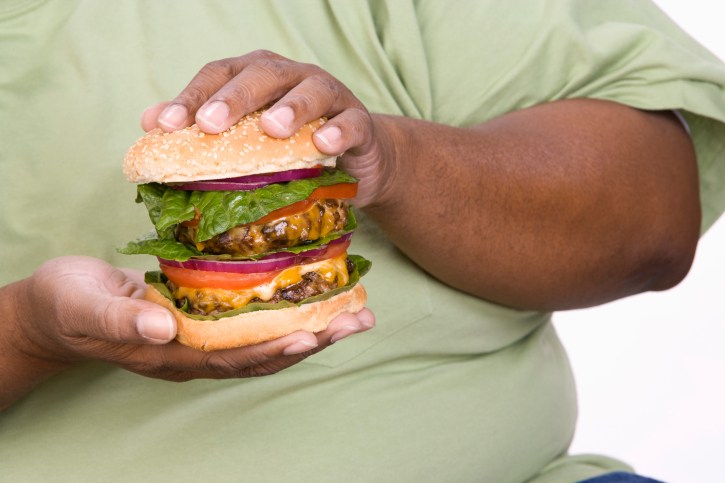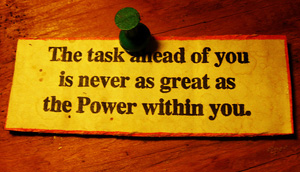12 Weight Loss Tips That Have Nothing To Do With Giving Up Food
Life's short and food is glorious.
If you're trying to hit weight loss goals in the new year, you may have decided all those tantalizing office snacks and dinners out are off the table. But luckily, losing weight doesn't have to require giving up your favorite foods. Often, just a slight tweak to your environment or behavior, rather than changing the actual menu, is all it takes.
Check out the 12 tips below, which can help you stay on top of both your food bucket list and your health goals:
1. Eat off of a plate, not out of the bag.
Seeing is believing, so it's important for portion control that you see how much of a snack you're ingesting before you dive in. Otherwise, you could consume way more than you mean to. If you're truly devoted, you might divide a snack into individual portions even before you get munching (store the rest for later in sealable plastic bags). This'll help you stick to one serving.
2. Make that plate a small plate.
Many studies have examined if eating from a smaller plate helps people consume fewer calories. According to a recent analysis published in the Journal of the Association for Consumer Research, reducing plate diameter by 30 percent reduces the amount of food eaten by 30 percent. Simply changing the size of the plate from which you serve yourself could help you cut calories. Pretty cool.
3. And a blue one.
This suggestion is based off a series of studies that found when a food's color contrasted with the plate on which it was was served, fewer calories were consumed. In one experiment, researchers found that people ate more spaghetti and marinara sauce when it was served on a red plate that matched the sauce than when it was served on a white one. The contrast, according to the scientists, makes the portion appear larger. Experts often recommend blue because not many foods are blue, but if blue doesn't fit in with your kitchen decor, fear not. To put this trick to work, just make sure your plate doesn't match the color of your dinner.
4. Drink out of a tall, skinny glass.
Cocktails may look fancy served in a short, wide glass, but that may prompt an over-pour of calories. One study found that people pour 30 percent more liquid into short glasses compared to tall, skinny glasses of the same volume, overestimating how much they're really pouring. With that big pour, your also getting 30 percent more calories.
5. Skip the commercials.
Seeing food on TV will make you want food in your belly. Research published in Health Psychology examined the effect of food-based television advertisements and concluded the impact was big: Exposure to food advertisements caused people watching TV to snack more. The snackers were not necessarily driven to eat the product being promoted, but snack food in general. Similarly, watching cooking shows for recipe inspiration has been linked with a greater risk for obesity. Switch off "Top Chef" and record your favorite shows -- thereby gaining the power to fast forward through ads -- to defeat TV's almighty power to induce hunger.
6. Hide your junk food.
Out of sight, out of mind. Just as seeing food on TV induces cravings, not seeing food may help reduce them. One experiment published in the International Journal of Obesity found that office workers ate fewer candies from a bowl when the bowl was opaque or covered compared to when it was clear. You can implement this trick at home by putting your junk food in colored containers or placing it behind healthier options in the pantry.
7. And put your healthy food in plain sight.
Organize your fridge like a mullet: Business in the front, party in the back. The office candy bowl study found that when food was more visible and accessible, people tended to eat more of it. And in a separate study, researchers compared the consumption of apples and popcorn based on proximity, finding that people ate more of whichever offering was closer. Replacing the candy bowl with nutritious foods like fruit, and get your better offerings front and center.
8. Chew, for goodness' sake.
This is a simple one: Make a point to chew your food well rather than slug it down. Chewing will make you eat your meal more slowly, which research shows will make you ingest fewer calories. Taking time to chew your meal gives your body more time to register fullness, so you can stop when you feel full rather than when you're stuffed.
9. Get some sleep.
When in doubt, sleep. Sleep appears to be a miracle solution for ailments across the board: It can boost your mood, improve your performance at work and even hamper headaches. Extensive research has shown that people who sleep fewer hours are more likely to be overweight. When you're running on empty, you feel hungrier than you would with quality rest.
10. Play Tetris.
If you've got a food craving, treat yourself to a good old-fashioned game of Tetris rather than attempting to "wait it out." A 2014 study revealed that visual-based tasks like playing a game decreases feelings of cravings (Angry Birds will probably work, too). Researchers say much of a craving is image-based, so distracting your mind with something else that is visual can minimize the strength of a craving.
11. Stop wearing sweats.
"Wearing stylish clothing that makes you feel attractive -- as opposed to comfy sweats and lounge wear that hide your body -- will encourage you to eat in a way that shows you care about your appearance and your body,” clinical psychologist Katie Rickel told Grandparents.com. Dressing the part can serve as a good reminder of your goals.
12. Take the proverbial chill pill.
Chronic stress can be a major cause of weight gain, so it's in your best interest to relax a little. Pinpoint the root of your stress and address it: Consider talking your problems out with a friend or therapist, and be proactive about mitigating them. You might consider participating in some stress-reducing activities: Deep-breathing, yoga, listening to music and taking a nap have all been shown to help calm nerves.
A previous version of this article was published on May 13, 2015.
Related on HuffPost:
Healthy Slow Cooker RecipesHealthy Slow Cooker Recipes
1 of 20 Slow Cooker Balsamic Chicken Get the Slow Cooker Balsamic Chicken recipe from Foodie Crush Foodie Crush
Foodie Crush
-
7 Secrets Of Permanate Weight Loss
As a member of Gold抯 Gym for many years,
-
Can I Lose My Baby Weight?
Almost every new mom has the same though
-
Unexplained Weight Loss in Women
Unexplained weight loss can be frightening to experience. However, it
-
Follow Food Pyramid Guidelines for Weight Loss
Following the food pyramid for weight loss has interested many people
-
Turn Off The Fat Genes A Book Review
Once in a while a good title comes along and Turn Off the Fat Genes is
-
Five Keys to Weight Loss for Women
Losing weight is never easy for women, b
- DON'T MISS
- Sound Healing, Hypnosis and Weight Loss
- Losing Weight Is Easy But How Do You Keep It Off
- Fatloss4idiots Diet -Does It work ?
- The 3 Tools I Used To Lose 145 Pounds
- 5 fat loss myths that you must not ignore!
- Weight Lifting Programs: Why They Should be Incorporated Into Your Fitness Objectives
- Get Rid of 5 Pounds of Fat Fast
- Weight Loss Goals - How To Lose Weight Without Knowing It
- Diet Tips Five Easy Ways To Lose Weight Fast
- Self Hypnosis for Weight Loss Only Works When You Choose the Right Type of Hypnosis Instructions




